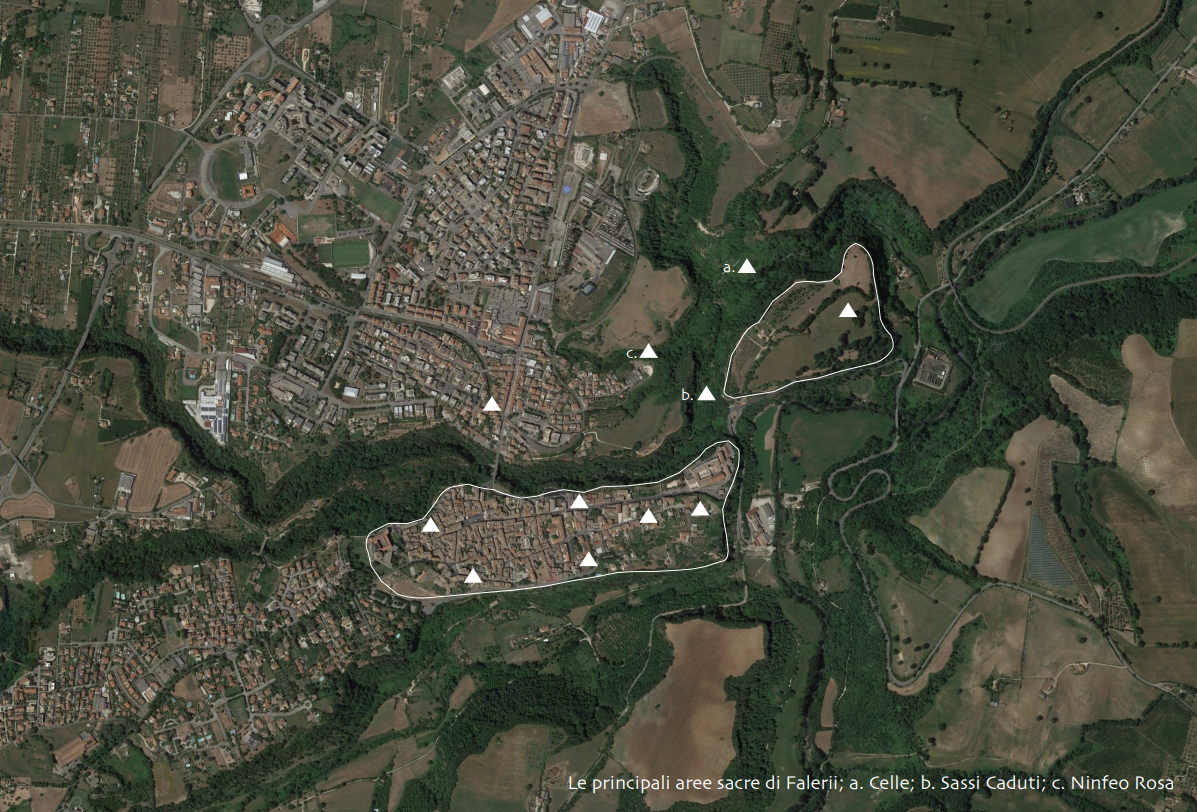UNA MOSTRA SUL TEMPIO DI CELLE: LE RAGIONI

Italiano
La domanda potrebbe essere più che giustificata, specie nella mente di chi non è strettamente un addetto ai lavori.
In fondo quella di Celle (Fig., a) è una delle tante realtà santuariali presenti nella città preromana di Falerii.
Eppure essa può raccontarci qualcosa di più.
Il santuario di Celle fu la prima grande area sacra ad essere scoperta a Falerii, generando un’eco scientifica di grande rilevanza: “In essa abbiamo l’unico esempio della pianta di un grande tempio etrusco”, si scrisse allora.
Nel corso del tempo e grazie alle scoperte effettuate anche nella vicina località Sassi Caduti (Fig., b) è stato sempre più evidente, come il santuario in località Celle si presentasse quasi come una sorta di “ingresso” monumentale dalla valle del Tevere a un’area suburbana della città antica.
Proprio in questo fondovalle trovavano spazio almeno tre aree sacre (Fig., a-c), in cui elementi naturali e azioni umane erano stati sapientemente miscelati nel e dal sistema religioso e politico della città antica.
Infine proprio in Celle, il cui tempio tradizionalmente è stato legato alla figura della dea Giunone, Curite - ovverosia, secondo una delle tradizioni, “armata” - si è recentemente ipotizzato di intravedere anche la presenza di Halesus, mitico fondatore della città di Falerii.
Il protagonista di questa mostra è dunque un luogo dai molti significati, antichi e moderni, che, grazie a indagini ancora in corso, può essere raccontato con tante voci diverse, alcune più tradizionali e altre più innovative.
Inglese
Why an exhibition on the sacred area in Celle? This is a perfectly legitimate question, especially in the minds of those who are not closely involved in the work.
After all, Celle (Fig., a) is one of the many sanctuary sites present in the pre-Roman city of Falerii. However, it can provide us with more information.
The sanctuary of Celle was the first large sacred area to be discovered in Falerii, generating a scientific echo that spread far and wide: as was written at the time, “In it we have the only example of the plan of a large Etruscan temple”.
Over the course of time and thanks to the discoveries made in the nearby locality of Sassi Caduti (Fig., b), it has become increasingly evident that the sanctuary in Celle most likely represented as a sort of monumental “entrance” from the Tiber Valley to the suburban area of the ancient city.
In the valley floor alone there were at least three sacred areas (Fig., a-c), in which natural elements and human actions were astutely combined with the religious and political system of the city.
Finally, in Celle, where the temple has traditionally been linked to the figure of the goddess Juno, Curitis - therefore armed, according to one of the traditions - it has recently been suggested that it is possible to identify the presence of Halesus, the mythical founder of the city of Falerii.
The central character of this exhibition is, therefore, a place with many meanings, both ancient and modern, which, thanks to ongoing investigations, can be told with many different voices, some more traditional and others more innovative.